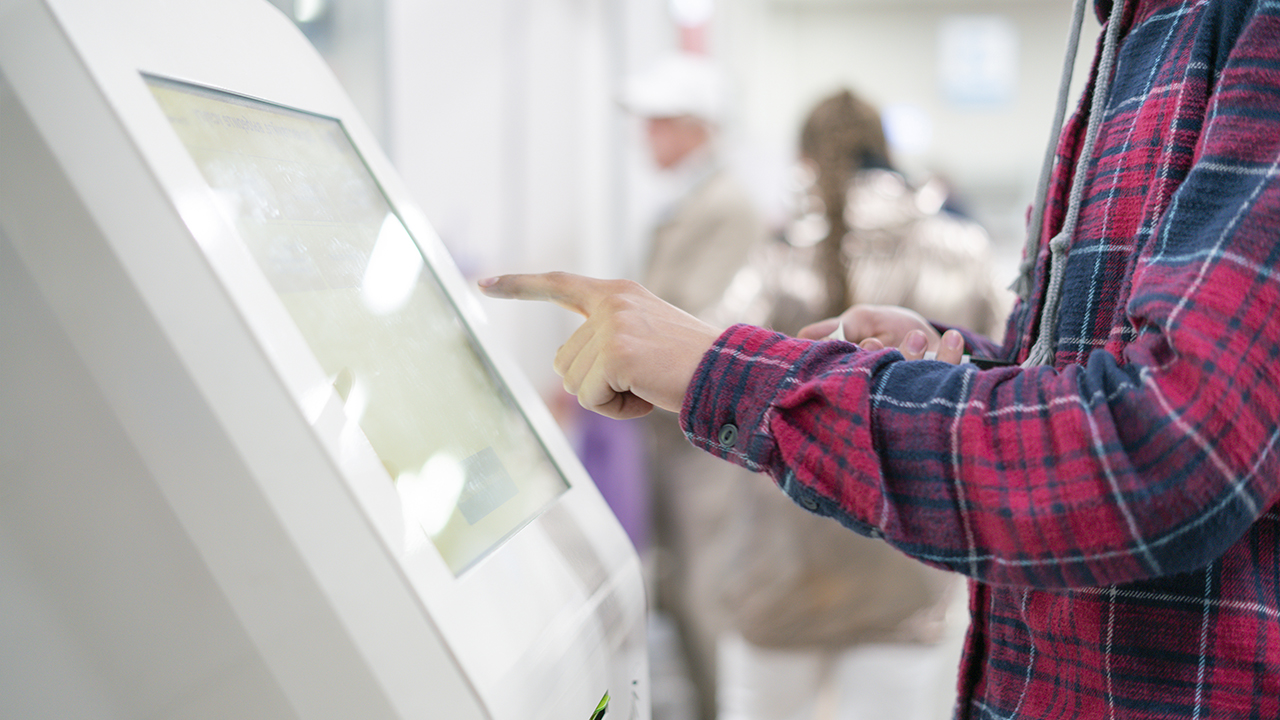New technologies and innovations are boosting the digital signage industry. The range of uses and types of both indoor and outdoor digital signs and kiosks has become an exciting trend to watch, and adoption is only going to increase.
In fact the market is expected to reach more than 32 billion USD by 2032, up from 19.6 billion USD in 2016. This creates not only an exciting environment for retailers and advertisers, but also an enormous opportunity for companies building digital signage solutions, such as displays and management software. Digi partners with digital signage and kiosk developers to serve this growing market with high performance, secure, connected digital signage products and services, and also serves the retail, banking, hospitality and other industries that need fast drop-in networking for business connectivity.
Why the Growing Trend Toward Digital Signage?
Getting messaging across when shoppers, convention visitors and travelers are inundated with content is no easy task. Digital signage is far more captivating than its flat, immutable ancestors, and it gets results. Research tells us that four out of five customers have gone into a store because a digital sign caught their interest. And four out of ten shoppers admitted that digital signs had influenced their purchase behavior by serving up additional information.
The ROI of digital signage is complex. For example, retailers, advertisers and site managers of large venues report a wide range of benefits, including reduced printing costs for programs, menus and offers. Personnel can better utilize their time than in providing instructions, directions and other information, when digital signage and kiosks provide all of the needed information. And the content can be kept up-to-date, whether it's about new menu items, special offers, schedule changes or updated prices.
This next generation of advertising technology is affordable and effective, making it attractive to retailers. The technology goes way beyond advertising today, to include signage and information kiosks in airports, malls, schools, convention halls and entertainment venues. This is in large part due to the power of connectivity – the ability to easily and remotely manage signage data and freshen displays with updated messages and imagery.
In this article, we’ll look at the trends in Internet-connected digital signs and see how retailers are using this technology to engage with customers and create interactive digital experiences.
Trends in Outdoor Signage

New capabilities in outdoor signage provide greater control and management, enabling any content manager to update the messaging and images from any smart device. This capability is one of the driving factors in the adoption of digital signage everywhere, and is a testimonial to the power of the Internet of Things.
In the past, service personnel had to update signs by plugging in a USB drive and uploading new content, which meant physically accessing the signage. The cost in time and gas are of course prohibitive to the task of keeping signage up-to-date with fresh content or offers.
Power management is another newer capability; bright digital signage is eye catching and helps passersby to be able to quickly read the content, but it is also power intensive. Modern signs have automated dimming based on lighting conditions, reducing power consumption in brighter light.
Even though outdoor signs are built to withstand extreme environments such as cold and snow, or heat and humidity, it's important to keep tabs on them to ensure they are properly functioning. Internet-connected signage can send out a message via email or SMS in the event of malfunction or need for servicing, avoiding the need to send a technician to check on signs when they are functioning normally.
Indoor Digital Signage Trends

Today, there is a clear trend toward interactive digital kiosks that provide information to visitors and travelers, and enable diners to place orders at quick-serve restaurants. These signs allow the restaurant to save on labor costs as well as cut down on long lines at the register.
We will continue to see a range of interactive innovations in digital signs and kiosks. For example, the German consulting firm Waketo has created a new digital product called the “Digital Touch Table.” The digital touchscreen, about the size of a large suitcase, is built into a table and customers can interact with the sign by placing objects on top of it. The sign recognizes the objects and displays information about the items, furthering customer engagement with the product. The sign even allows customers to purchase the product without having to visit the cash register.
Like outdoor digital signage, indoor signs must be Internet connected so that they can be quickly updated, send diagnostic reports, make sales and manage the customer data that they gather. Interactive digital kiosks and signs hold visitors and shoppers attention for longer, which is important to compete in the competitive retail landscape.
The Latest Digital Signage Trends

In our blog post, Next Generation Retail, we talked about the influences of artificial intelligence (AI) and machine learning on the advertising world. The newest generation of digital signs are being built with cameras and facial recognition software, which can detect whether a person is looking at the display. Once it detects a face the software can change the content accordingly. Facial recognition software an also be used to scan facial expressions, read a person’s mood and determine their sex and age. All of that information can be used to display highly targeted ads.
Yoplait is taking advantage of this trend in digital signage as they recently released a digital outdoor sign capable of reading a person’s mood and offering them a free smoothie to either “keep smiling” or fix their “hanger.” Interactive signage is on an upward growth with artificial intelligence and machine learning gaining ground as sophisticated, integrated technologies that support real-world use cases.
Interactive apps displayed on both indoor and outdoor digital signage are also becoming popular, and there are many different types that can be used in conjunction with digital signage. Gaming apps and live streaming apps are now being augmented by more functional apps supporting tasks. For example, retailers can tag their inventory with RFID chips so that when a customer holds an item up to the screen, the sign can display product information.
Many retailers are now attaching tracking to their products. The advantage is that a customer can browse product inventory on a digital sign and the sign can tell them the exact location of that item in the store. This type of service is not only useful for the customer, it’s also a good example of how IoT-enabled digital signage can help a store to improve its customer experience.
Enabling High Performance Digital Signage
IoT-enabled digital signage functionality requires reliable, secure and consistent connectivity. Digi solutions such as the Digi EX15, provide reliable LTE cellular connectivity - either as a primary connection or for failover. If the wired Internet connection goes out the EX15 will automatically connect to the cellular network, ensuring uptime for Internet-connected devices like ATMs, kiosks, digital signs and POS systems.
Outdoor digital signs require an industrial solution designed to operate flawlessly in extreme conditions. Digi offers several rugged, high-performance solutions, in both the Industrial and Transportation product lines, for both stationary and mobile applications. These include the Digi WR11 XT, 4G LTE wireless router and the Digi WR54 mobile router which is designed to securely segment vehicle data from passenger data. With their rugged design, high reliability, and dual-carrier failover functionality, these solutions can perform under high demands and extreme conditions for years with no downtime.
The Time of Digital Signage
The sophistication of indoor and outdoor digital signage will continue to improve with advances in AI, machine learning and the rollout of 5G networks. Digital signs will become better able to recognizing visitors and respond to their perceived needs and interests, providing targeted advertising and even dialogue with a customer as AI improves.